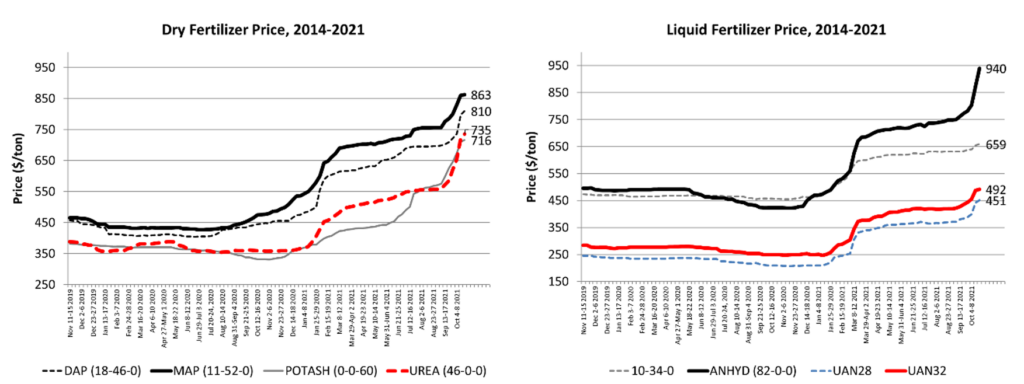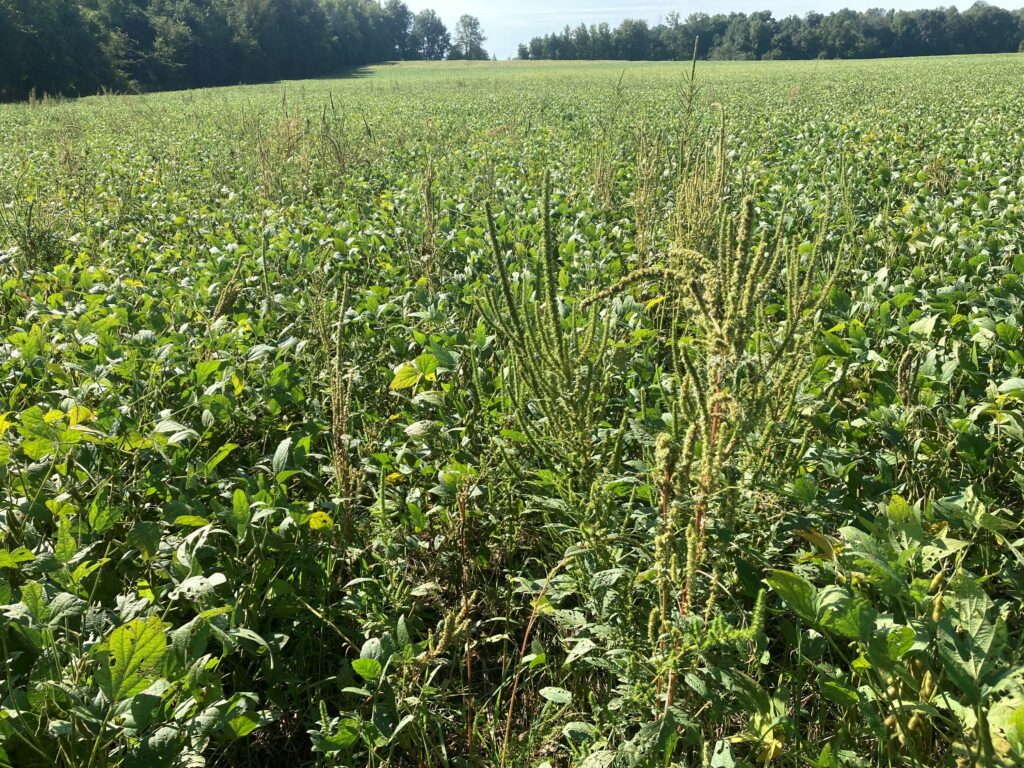Calls concerning our forecast have been steady. In order to get some insight into how to handle closed bolls some have remaining in the upper canopy prior to a freeze, I reached out to Dr. Seth Byrd in Oklahoma. Dr. Byrd has served in both Texas and Oklahoma and has years of experience tackling this issue when an impending freeze event is in the forecast. His comments are below. Special thanks to Dr. Byrd for this contribution! Continue reading
Recent Updates
Managing Input Price Risk
Posted by Tyson Raper on behalf of the author, Dr. Aaron Smith

It’s a challenging time for crop producers to manage input price risk. Input prices for fertilizer, crop protection (chemicals), machinery, fuel, labor, rent, and insurance are up substantially compared to last year at this time. Additionally, availability and timeliness of delivery are a major concern. Fertilizer prices highlight this dramatic increase in the cost of production (graphs above). Most common fertilizers have more than doubled compared to last year. As such, producers are seeking strategies to reduce input costs. Two recommendations, as a starting point, are soil sampling (know what you’ve got) and crop selection (know current relative cost and revenue relationships for commodities produced on your farm). Unfortunately, there is no “silver bullet” to mitigate rising input costs and availability concerns. So, producers will need to be creative in their approach and consider numerous strategies. Continue reading
Soybean Seed Quality Discounts this Fall
Harvest and delivery delays this fall can be blamed partly on the weather and partly on the continued impact of Hurricane Ida on grain movement through the system. Continue reading
A new tool for utilizing Mid-South soybean variety trial data
Which soybean variety is best suited to my region? State variety testing programs provide critical research to help answer that question by evaluating hundreds of soybean varieties every year across multiple locations within a state. But what if we think beyond the bounds of our state borders when it comes to variety evaluation? While a single state alone provides valuable data, our growing regions often cross state lines. A location in West Tennessee may share more similarities to sites in East Arkansas than it does to East Tennessee. By combining variety testing data across multiple states, we can create a more robust dataset that allows us to better predict which varieties are best suited to specific regions and growing conditions. Continue reading
Points to Consider when Choosing Soybean Herbicide Trait Platform

Several retailers and growers in recent weeks have asked about switching away from Xtend soybeans due to the poor pigweed control they have seen in consecutive years in some fields. There are a lot of moving parts when one attempts to answer this question and some different points need to be considered. Continue reading
Bicentennial Heritage Festival This Saturday (Jackson, TN)
 Be sure to stop by the West TN Research and Education Center this Saturday (Oct. 9, 10:00 AM – 4:00 PM) for this event commemorating our agricultural and rural heritage on the bicentennial of many counties in the region becoming a bona fide part of Tennessee. This should be a great event for families and the weather is looking good!
Be sure to stop by the West TN Research and Education Center this Saturday (Oct. 9, 10:00 AM – 4:00 PM) for this event commemorating our agricultural and rural heritage on the bicentennial of many counties in the region becoming a bona fide part of Tennessee. This should be a great event for families and the weather is looking good!
Link to the PROGRAM and VIDEO PROMO
Join us at 605 Airways Blvd, Jackson, TN, 38301
Start Planning for Herbicide Shortages in 2022
Retailers and the basic suppliers are all very concerned about herbicide shortages in 2022. We all can recall similar concerns this past spring. In most cases applicators were able to get what they needed . However, this spring retailers were often able to fill shortages by accessing carryover from 2020. I have been told there will be no carryover herbicides to fill holes in 2022 so the probability of herbicides not being available is much more likely. Continue reading
Harvest aid concoctions moving into the first full week of Oct
Rainfall pushed us out of the field today and it looks like we may not get back to spraying until early next week; it is generally best to not apply harvest aids in front of a guaranteed rain. In this blog, I cover defoliation concoctions as we move into cooler temperatures next week. Continue reading

